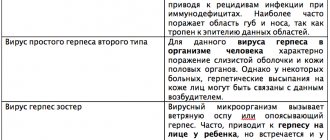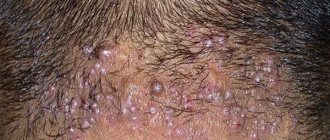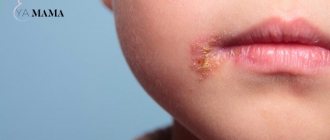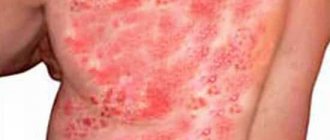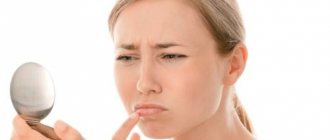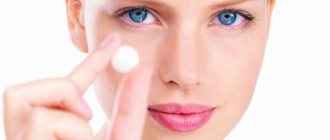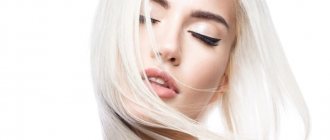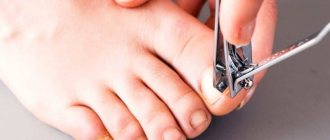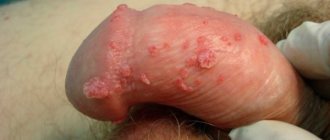How to care for your ears?
Our skin is the first barrier that protects the body from the harmful effects of the environment. Negative processes occurring in the body also affect the condition of the skin. The skin may become red, flaky, rash, and blistered.
Blisters are perhaps the most unpleasant phenomenon of all of the above. They not only spoil the aesthetic appearance, but cause discomfort in the form of itching, and can even cause pain.
It is especially unpleasant when a blister appears on the ear, pinna or on the thin skin behind it. In this case, even touching the pillow can cause pain and discomfort.
Description of the pathology
Herpes in the ear is a rare disease. The provocateur of development is, as a rule, the third type of herpes virus - Herpes zoster. Both women and men are equally susceptible to the disease. Main routes of transmission:
- contact;
- airborne;
- vertical.
If you do not touch the affected area with your hands or scratch it, then the symptoms are harmless, unless you take into account the unpleasant, tiring sensations.
What to do if it itches, scratch it or endure it?
No scratching, no matter how itchy the skin affected by the blister. A serious risk of infection arises due to the specific location of the irritation.
Constant friction with hair and hats contributes to the introduction of harmful bacteria into micro-wounds; even a tiny scratch heals here very slowly, and dermatitis will have to be treated for at least a week.
When affected by a fungus or infectious disease, the risk of spreading the disease with the liquid contained in the blister increases significantly, so herpes, fungus, and lichen can be “spread” throughout the body.
Causes
The human body is a single, balanced and interconnected system. If there is a general weakening of the body or its individual organs are affected, then the possibility of pathogenic viruses entering the blood increases significantly.
On this topic
- Herpes
All about herpes simplex
- Irina Nasredinovna Nachoeva
- September 24, 2020
Among the main reasons contributing to the development of the disease are:
- Hypothermia of the body. This factor acts as a provocateur for the manifestation of many pathologies, including herpes.
- period . At this time, the female body weakens significantly, which is facilitated by the processes occurring in it. A weakened immune system allows many viruses to enter.
- Nervous exhaustion. Stressful situations lead to increased heart rate and disruption of metabolic processes.
- Overheating due to exposure to sunlight or in a sauna. High temperatures disrupt the functioning of the immune and nervous systems, causing the body to weaken.
- Unprotected sexual intercourse.
- The menstrual cycle is when the internal processes of the reproductive system undergo changes.
- Direct contact with a person who is a carrier of the virus.
- Abuse of drugs and alcohol, which disrupts the normal functioning of internal organs.
The virus can enter the bloodstream through the skin or mucous membrane. Its penetration into the nerve endings is indicated by the manifestation of the first signs of the disease.
Rash with blisters on ears
How to care for your ears?
Our skin is the first barrier that protects the body from the harmful effects of the environment. Negative processes occurring in the body also affect the condition of the skin. The skin may become red, flaky, rash, and blistered.
Blisters are perhaps the most unpleasant phenomenon of all of the above. They not only spoil the aesthetic appearance, but cause discomfort in the form of itching, and can even cause pain.
It is especially unpleasant when a blister appears on the ear, pinna or on the thin skin behind it. In this case, even touching the pillow can cause pain and discomfort.
Symptoms
A simple form of herpetic infection of the concha of the ear is characterized by a rash, the localization of which is the edge of the auricle, the lobe or the area of the external meatus.
At the same time, rashes will appear on the lips and nose. Exacerbation of the pathology is facilitated by body fatigue, a weak immune system and the presence of a viral infection.
Among the first signs are:
- change skin color
- drying of the bubbles during the day.
Depending on how the healing proceeds, the formation of brown crusts can be observed on the wounds, which, when they fall off, do not leave scars in the affected areas. The disease is characterized by a rapid course. In rare cases, it can lead to complications, such as hearing loss.
Herpes zoster is characterized by the presence of a zoster infection in the body, the location of which is the facial nerve. Rashes begin to form not only on the outside, but also on the inside of the ear.
The formation of wounds is accompanied by sharp pain. When dry, a dense, lumpy crust forms on their surface. After it falls off, small depressions form on the ear - scars.
If treatment for herpes in the ear is not started in a timely manner, the pathology can lead to the development of a severe form of the disease, which is accompanied by symptoms such as:
- severe pain;
- profuse rash;
- paralysis of facial muscles, a few days after the formation of ulcers.
On this topic
- Herpes
All about the blood test for herpes
- Irina Nasredinovna Nachoeva
- September 24, 2020
Herpes zoster leads to damage to the middle and inner ear, which is accompanied by decreased hearing and impaired functioning of the vestibular apparatus. Recovery usually takes at least a year.
Within one day after infection with the virus, the following symptoms will appear:
- general deterioration of health;
- headache;
- increased body temperature;
- constant dizziness;
- violation of movement coordination;
- redness of the ear and tip of the nose;
- swelling extending to the face;
- scratching the resulting blisters, which have a rough surface;
- severe itching and painful rashes.
Rarely, the manifestation of herpes is observed on the lobe and behind the ear. With timely treatment, complications can be avoided.
Reactivation of the virus is accompanied by the appearance of characteristic irritation, which manifests itself in the form of blisters that look like pimples. Under no circumstances should you crush them, especially with your bare hands. Any inflammatory process goes through three stages until it disappears:
- The bubbles swell and fill with liquid. The process is accompanied by itching, which is recommended to be ignored, or to use special ointments to suppress the symptom. This stage lasts for about 2 days.
- Overflow. The bubbles burst and a sticky liquid with a yellowish tint is released.
- Healing. Over the course of three days, the wounds heal and a brown crust forms on their surface. It is also not recommended to touch it, since the restoration process is underway underneath it. Over time it will fall off on its own.
With an advanced form of herpes in the ear, blisters may also appear inside the ear canal. This is quite dangerous to health and can lead to unpleasant consequences.
Watery blisters appeared on the ears
The appearance of blisters behind the ears can be a sign of many diseases, allergies or inflammation.
Therefore, you should not engage in self-diagnosis, but turn to doctors for qualified help.
After all, any formation on the head is potentially dangerous and, if delayed, can cause irreversible processes in the body. Let's take a closer look at whether a blister has appeared behind the ear - what it is and what it might be connected with.
Blisters on the ear: causes
Blisters are inflammations in the upper layer of the skin, which are characterized by clearly defined swelling, red or pinkish color, and the shape can be either blurry or clear.
Multiple vesicles - blisters, very similar to pimples, but with transparent contents, appear during an allergic skin reaction. But there are many more reasons when one or more blisters appear behind the ear:
- Insect bite: mosquito, midge, flea and others cause a slight swelling when bitten, which itches a lot
- Fungus: Fungal infections often cause a rash; if the infection occurs in the skin behind the ears, which is not uncommon, blisters and itching are likely.
- Miliaria: as on the fingers, in the armpits, behind the ears, where the skin often sweats under a warm hat, dyshidrosis can manifest itself.
- Friction: Sometimes a blister appears after intense rubbing of the skin behind the ear.
- Dermatitis: After contact with an irritating substance, contact dermatitis can appear behind the ear, where the skin is very delicate.
- Allergic reaction: hives after dyeing hair or changing shampoo or detergent appear and disappear within a few hours.
- Infection: chicken pox, measles, rubella and other infectious and highly contagious diseases occur with a rash in the form of blisters.
- Seborrhea: This disease can also affect the part of the scalp that is not covered with hair.
- Scrofula: many have not heard of this disease, meanwhile, grayish formations behind the ears, itchy and flaky - one of the most common diseases, it is caused by the tubercle bacillus, affects people (often children under 10 years of age, but sometimes adults), with a tendency to tuberculosis, weakened immune system.
- Neoplasms: often what a person mistakes for a blister does not go away for quite a long time; dense contents appear inside it, which keeps increasing, eventually forming not just a blister, but a huge “bump.” Such a blister may ultimately turn out to be either an epidermal cyst (benign tumor) or a malignant skin lesion.
- Otitis: inflammation can be both external and internal; itching and the appearance of a blister in the ear can also be the initial stage of otitis.
These and other reasons should force a person not to hesitate to contact a dermatologist, to follow his recommendations and advice regarding consultations with specialists - allergists, nutritionists, neurologists and venereologists.
What to do if it itches, scratch it or endure it?
No scratching, no matter how itchy the skin affected by the blister. A serious risk of infection arises due to the specific location of the irritation.
Constant friction with hair and hats contributes to the introduction of harmful bacteria into micro-wounds; even a tiny scratch heals here very slowly, and dermatitis will have to be treated for at least a week.
When affected by a fungus or infectious disease, the risk of spreading the disease with the liquid contained in the blister increases significantly, so herpes, fungus, and lichen can be “spread” throughout the body.
First aid
One or more blisters that appear behind the ears should not be touched with bare hands, especially without treatment with an antiseptic.
If blisters appear where contact with a bandage, headdress or hair is inevitable, remove these squeezing and rubbing objects, put the hair in a ponytail, pin it up, comb it - do everything to avoid contact.
If you suspect an allergic reaction, remove substances that could cause it away: rinse off the hair dye immediately with plenty of water so that the blister does not develop into Quincke's edema (a life-threatening syndrome, which is essentially an ordinary but giant blister that causes suffocation), Wash off shampoos or gels with plenty of clean water.
- If there is a significant deterioration in health or shortness of breath, take the victim out into the fresh air, into a well-ventilated area.
- Give any antihistamine to relieve an exacerbation.
- Treat the surface behind the ears with an antiseptic.
- If severe itching occurs, apply ice; you can lubricate it with any remedy that relieves this symptom, from soda solution to Finalgon.
- If you feel unwell, call emergency medical help; if you feel well, go to the hospital to find out the cause of the blister.
When applying symptomatic treatment to relieve itching, we must not forget that only a doctor can provide real help, as well as make a diagnosis. Even if the blister does not cause concern, you should not let the disease take its course.
Source: https://geraklionmed.ru/na-ushah-poyavilis-voldyri-vodyanistye/
Diagnostics
If you have at least one of the symptoms described above, you should immediately seek medical help. An otolaryngologist deals with ear diseases. The specialist will conduct a general examination, taking into account both external signs of infection and existing pathogenic symptoms.
Sometimes, in order to make a more accurate diagnosis, it is necessary to take scrapings from newly formed blisters.
With high-quality and timely diagnosis of pathology, the possibility of preventing damage to the facial nerve, the manifestation of complications and concomitant diseases significantly increases.
We treat Bullous otitis media in children and adults correctly and quickly
Bullous otitis occurs when an infection from the nasal cavity moves to the ear. This mainly happens after diseases such as influenza and ARVI. If a person has a weak immune system, then he will probably get acute viral otitis media as a complication. Treatment of bullous otitis has its own characteristics.
One of the types of inflammatory process occurring in the ear cavity is bullous otitis media.
For treatment to give positive results, it is necessary to make a correct diagnosis, so if you notice signs of inflammation of the auricle, consult a doctor for advice.
Treatment
Treatment of ear herpes should only be carried out by a specialist in this field. Otherwise, you can only harm the health of the body. The treatment process must be constantly adjusted based on the results obtained. Therapeutic measures consist of several stages that require strict adherence to sequence.
First of all, it is better to completely isolate a patient diagnosed with ear herpes, since he is already a carrier of the pathological virus, and if a healthy person comes into contact with him, there is a high probability of infection.
In addition, it is better if the patient is provided with bed rest and complete rest. Physical activity will not lead to the desired result.
On this topic
- Herpes
All about herpes virus type 2
- Irina Nasredinovna Nachoeva
- September 3, 2020
Based on the examination results, the patient is prescribed medications from several groups. This:
- painkillers – their action is aimed at relieving pain symptoms, which allows the body to gain the strength necessary to fight the disease;
- antiviral - Acyclovir is especially popular and effective. Analogs such as Famciclovir and Tromantadine are no less effective. Drugs in this group are prescribed based on contraindications and individual characteristics of the body. The duration of treatment is about 14 days. In some cases, the course can be extended until all associated pathological signs disappear;
- to restore hearing and nerve fibers.
To improve the patient’s well-being, non-steroidal antiviral drugs can also be prescribed: Analgin, Aspirin, Naproxen. Paracetamol is used only if there is a high body temperature or for the purpose of temporary relief of pain.
On this topic
- Herpes
The best methods for treating herpes on the buttock
- Inna Viktorovna Zhikhoreva
- August 16, 2020
Special ointments are no less effective:
- Zovirax cream is the most popular it must be applied to the affected areas in the ear area at least four times a day. The duration of therapy is about one and a half weeks. To achieve the greatest possible effect, it is necessary to start using the drug at an early stage of the development of the pathology.
- You can also use ointments such as Tromantadine or Valacyclovir. They are also recommended to be applied to the skin up to six times a day.
- To treat rashes, you can use essential oils, which have drying and bactericidal properties.
Along with drug treatment, vitamin complexes are prescribed, which helps restore and strengthen the weakened immune system. Among the drugs with this action are also Reaferon, Leukinferon and Isoprinosine.
Maintaining a proper diet also plays an important role in the treatment of ear herpes. During the treatment period, it is necessary to consume foods rich in various beneficial microelements and vitamins.
An approximate diet is developed by a specialist. The patient can only use methods for adjusting it, selecting products taking into account his taste preferences. It is important to remember that the exception is carbohydrate, fatty and junk foods.
On this topic
- Herpes
All about herpes on the lower back
- Inna Viktorovna Zhikhoreva
- August 16, 2020
If you follow all the recommendations prescribed by your doctor, you can achieve improved health in a short period of time. Literally after two days the patient feels better. However, it is not recommended to stop treatment immediately.
A weakened immune system takes much longer to recover. Therefore, in order to completely defeat the virus, it is necessary to continue basic therapy for at least seven days after the skin symptoms disappear.
Possible complications
In case of untimely, incorrect treatment or its complete absence, the risk of developing serious complications increases. Among the most common, experts note the following:
- facial nerve paresis;
- manifestation of concomitant pathologies as a result of decreased immunity;
- neurological ear pain, which is accompanied by severe rashes affecting the face, back of the head and neck.
Such changes are called Ramsay-Hunt syndrome, which is characterized by incessant body pain, constant dizziness and impaired coordination of movement.
What are the dangers of herpes in the ears for others?
There is no horror in the manifestation of herpes, the main thing is to start the correct treatment in a timely manner, which a specialist will help you decide on.
The concern is the effect of the virus on the body - a decrease in immunity, which makes it easy to catch secondary infections during this period. If herpes is not treated correctly, it can cause serious complications. Herpes is common, especially when immunity is weakened. The formation of a herpes rash in the ears is a rather rare form that requires immediate intervention from specialists. To solve the problem, it is worth taking a comprehensive approach, using medications and folk remedies. To prevent the manifestation of such a viral disease, it is worth monitoring your health.
Prevention
To prevent the development of a pathology such as herpes in the ear, it is necessary not to neglect some simple rules, which are as follows:
- a healthy lifestyle at all times Walk more and spend more time in the fresh air. This will significantly strengthen your immune system.
- Nutrition must be correct. In order to work properly and perform a protective function, the body requires a constant supply of vitamins, proteins and microelements.
- Before eating vegetables and fruits, it is recommended to wash and heat treat them.
- It is better if bad habits are forgotten forever. Alcohol and nicotine primarily negatively affect human immunity.
- Personal hygiene must always be observed . Hands should be washed with soap as often as possible. If this is not possible, you can use antiseptics, for example, Miramistin or Chlorhexidine.
- room temperature In winter, it is important not to expose the body to hypothermia, and in the summer – to overheat.
